New Delhi: After renaming roads named after Mughal rulers, removing chapters on Mughal Empire from history textbooks, questioning Mughal-era tombs, and recasting Mughal emperors as invaders, the BJP has now inaugurated a monument tied directly to the Mughal legacy: Sheesh Mahal. The 17th-century Mughal-era pavilion in Delhi’s Shalimar Bagh, where Aurangzeb is said to have been crowned, was reopened on Wednesday by Chief Minister Rekha Gupta, who was joined by Culture and Tourism Minister Gajendra Singh Shekhawat, Lieutenant Governor Vinai Kumar Saxena, and MP Praveen Khandelwal.
Mughal monuments have always attracted controversy. During the Delhi Assembly elections, BJP leaders mockingly called former CM Arvind Kejriwal’s residence at 6, Flagstaff Road a “Sheesh Mahal”, a jibe at the money allegedly spent on refurbishing his official bungalow.
At Wednesday’s ceremony, Gupta took a dig at Kejriwal, saying, “He had made a Sheesh Mahal for his own comfort, now this government has made a Sheesh Mahal for people. This is the difference. I only want to say that may this Sheesh Mahal stand tall.”
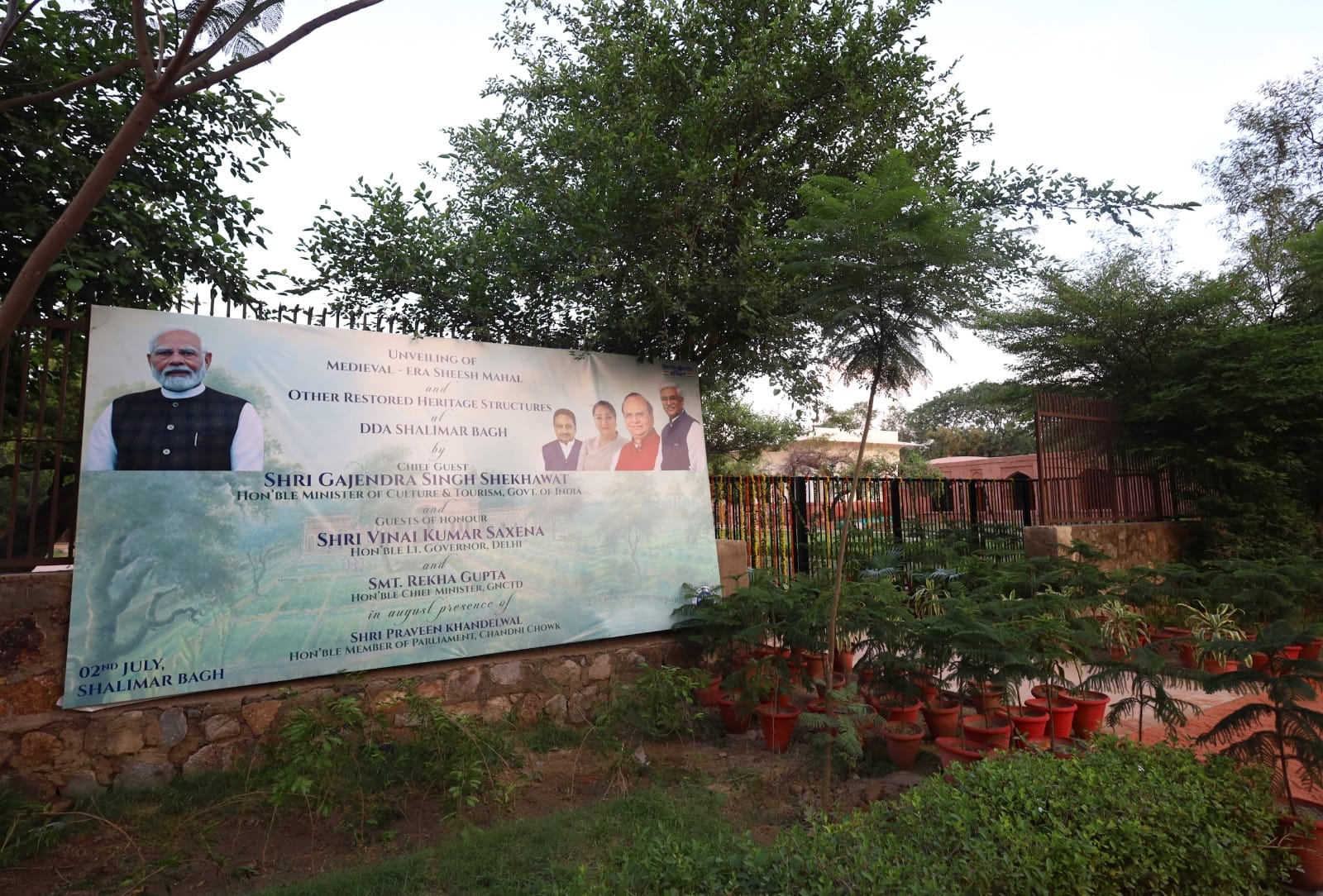
She also praised the Delhi government’s efforts to preserve the city’s heritage and emphasised the importance of making historical sites accessible to the public. Her statement stood in contrast to the political posturing elsewhere in the country. Earlier this year, Hindu groups demanded the removal of Aurangzeb’s tomb in Nagpur. In 2015, the Aurangzeb Road in New Delhi was renamed Dr APJ Abdul Kalam Road by the NDMC following a proposal by then-BJP MP Maheish Girri. Similarly, the NCERT has dropped chapters on the Mughal Empire from Class 12 history textbooks, while the BJP government in Maharashtra has removed chapters on Mughal rulers such as Akbar, Shah Jahan, and Aurangzeb.
“For those who value India’s syncretic heritage, this is something fairly normal. As for the BJP, their political incoherence has veered into absurdity. They claim to despise Aurangzeb, yet of all the crumbling historical sites across India, they’ve chosen to restore the very location where he crowned himself emperor on July 31, 1658: Shalimar Bagh,” Congress spokesperson Pawan Khera said.
Khera criticised the Chief Minister for “waxing eloquent” about the importance of heritage, describing it as “the height of hypocrisy for someone whose politics thrives on demonising Mughals and Muslims to now pretend concern for Mughal heritage.”
“There couldn’t be a greater irony than the fact that the BJP is now the official custodian and promoter of Aurangzeb’s legacy. Sheesh Mahal is a souvenir of India’s pluralist inheritance, steeped in our medieval history, which is the Mughal history — history that the BJP, Rekha Gupta included, has systematically vilified. Now, in a desperate attempt to rebrand their bigotry, they’re celebrating what they once called “foreign invader history” as cultural pride,” he added.
Shah Jahan to Aurangzeb: The story of Sheesh Mahal
Sheesh Mahal was built in 1653 by Izz-un-Nissa Begum, wife of Mughal emperor Shah Jahan, as a tribute to the famed Shalimar Bagh in Kashmir. The monument is an example of Mughal garden architecture designed as a royal retreat away from the bustle of Shahjahanabad.
The architecture is made of bricks and lime plaster. Its walls are adorned with paintings of flowers and plants. The main building has a pavilion with a water channel running through it, a hallmark of Mughal aesthetics. A red sandstone building adjacent to Sheesh Mahal is believed to have functioned as a hamam.
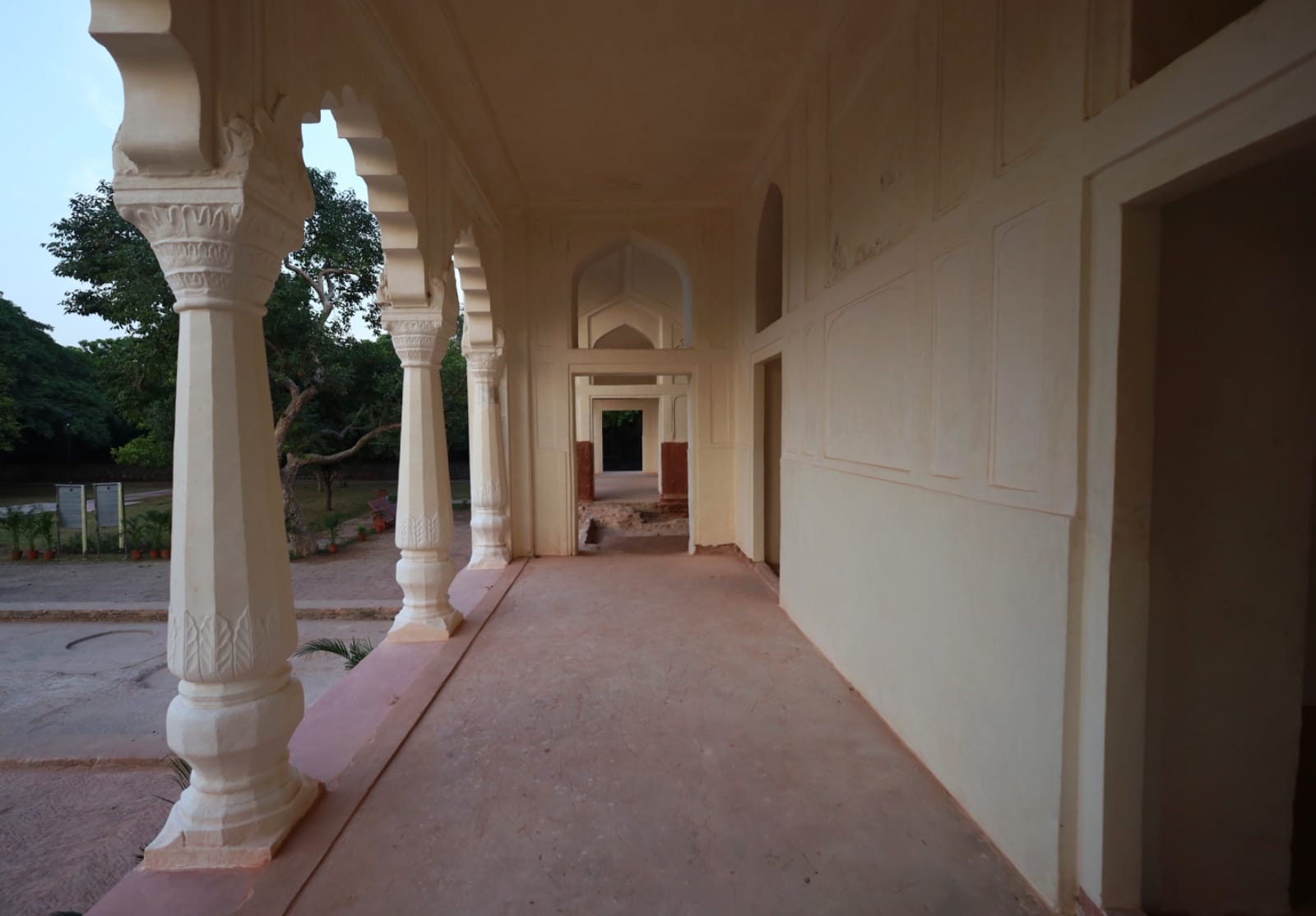
Last year, L-G Saxena directed the Delhi Development Authority (DDA) to draw a plan for the monument’s restoration. The rejuvenation project re-laid the front garden in the traditional Charbagh style, added red sandstone pathways and seating, and planted beds of seasonal flowers.
Located about 20 km from the Red Fort, Sheesh Mahal is believed by many historians to have hosted Aurangzeb’s crown ceremony.
“Aurangzeb chose a location far from the city because [the] people of Delhi were angry at him. He was a little nervous because his brother Dara Shukoh, a hindrance in his coronation, was still in Delhi,” historian and author Swapna Liddle told ThePrint.
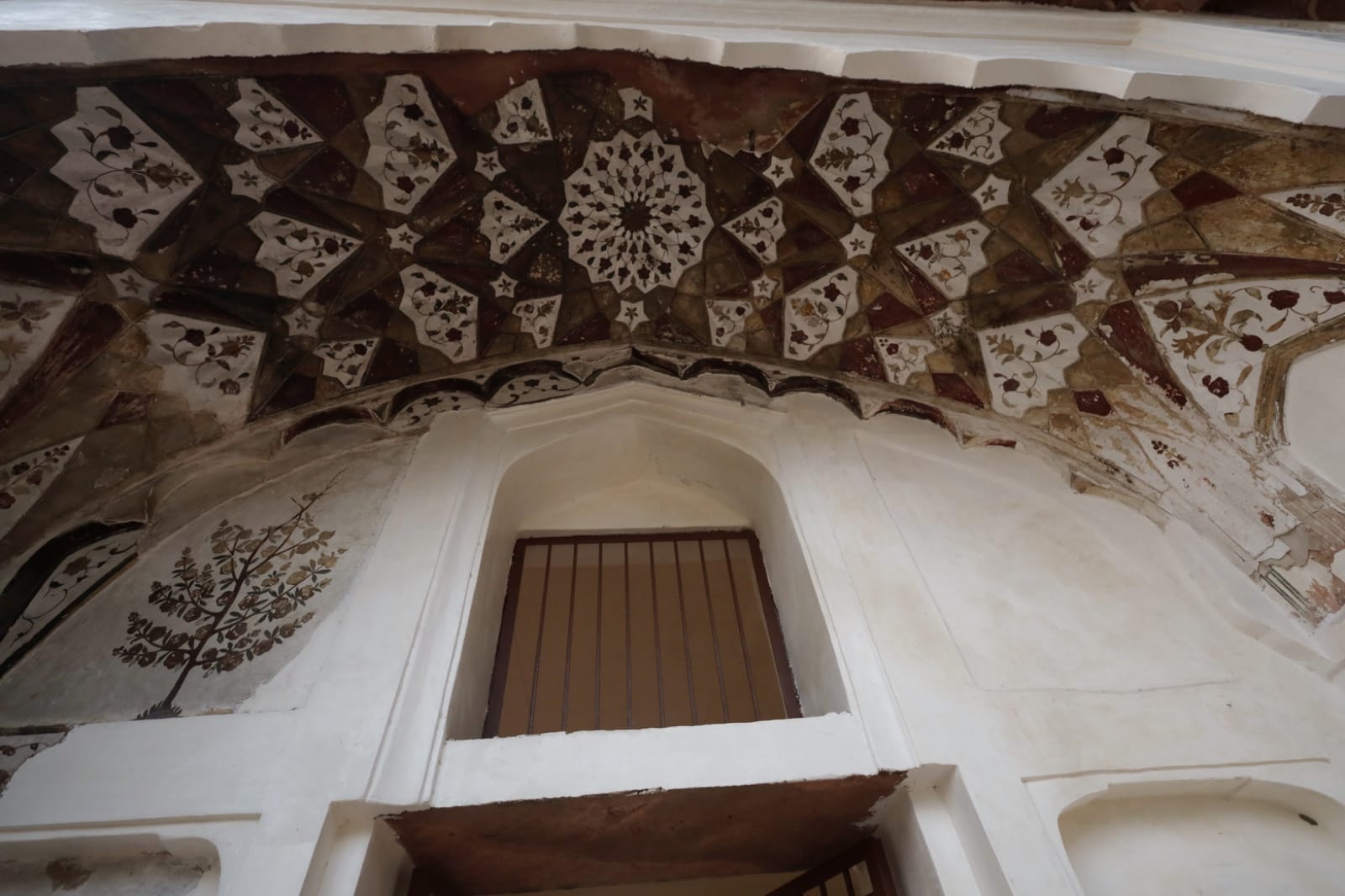
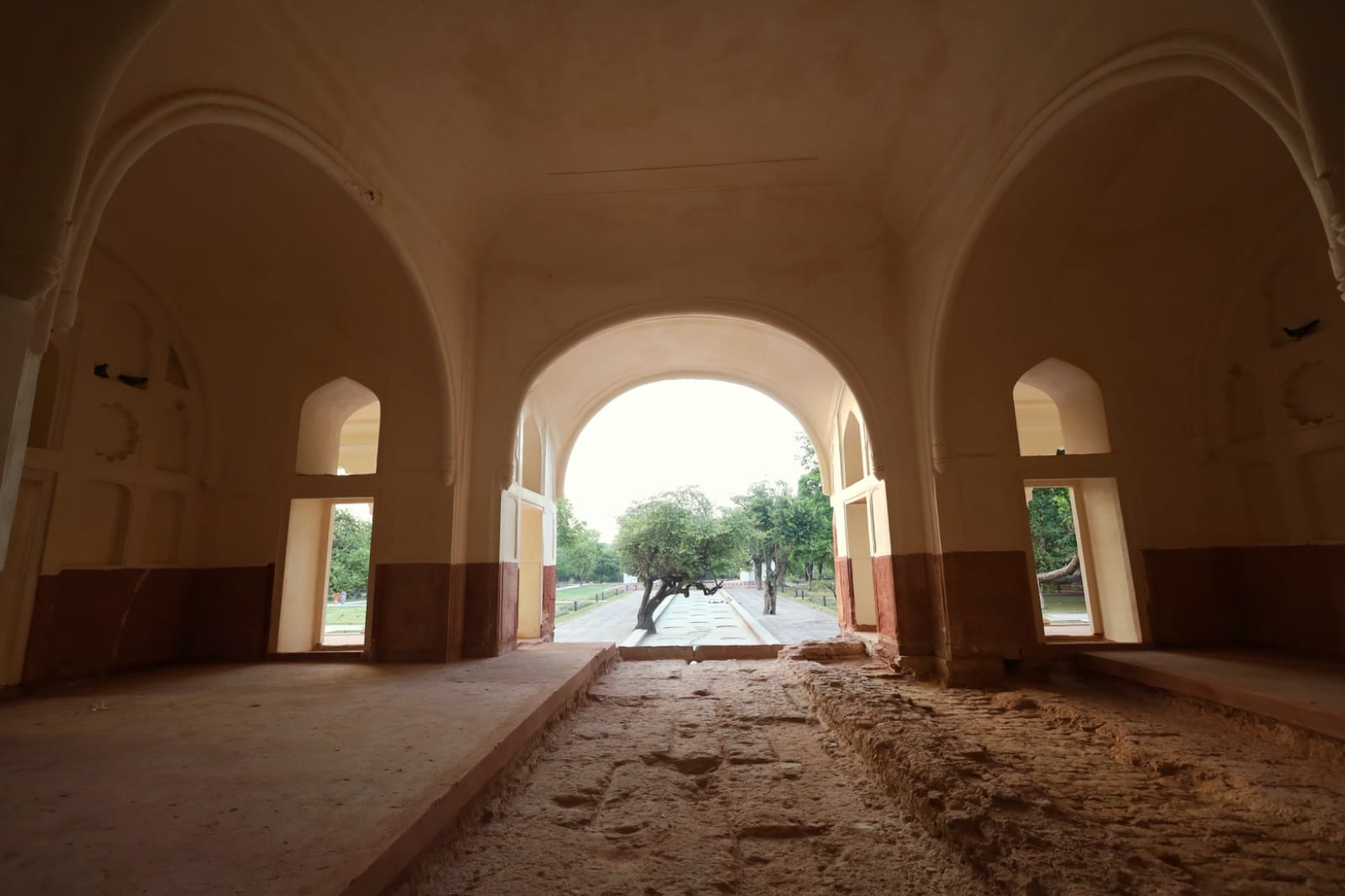
Shalimar Bagh: A living space, then and now
Shalimar Bagh itself was a part of the Mughal’s cityscape. Like other Mughal gardens, it was designed as a place of leisure and retreat. Hundred years later, the same mahal and bagh was used by British officials as a summer hideaway.
Today, the park, now maintained by the DDA, is a green refuge for the people living nearby. Elderly residents gather here for evening yoga sessions. Women arrive after long days for a quiet evening walk, and children play in a small designated section.
“We have been visiting this park for so long,” said Mamta Mishra, a local resident who was picking ivy gourd leaves for evening fritters. “Earlier, when there was no gate, we would walk into the monument freely. This place is a respite in the concrete jungle of West Delhi.”
The park is crowded and the atmosphere is lively. Grilled corn vendors are lined just outside the main gate, while children crowd the ice cream shop. Shalimar Bagh has become a small retreat for local families.
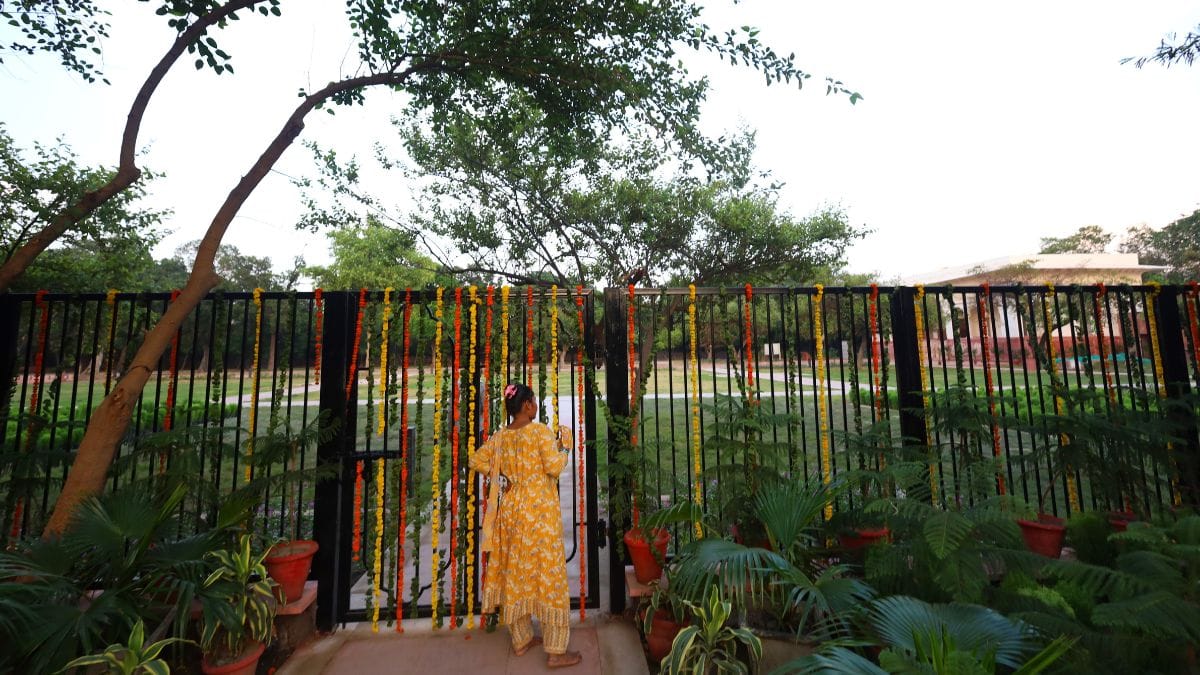
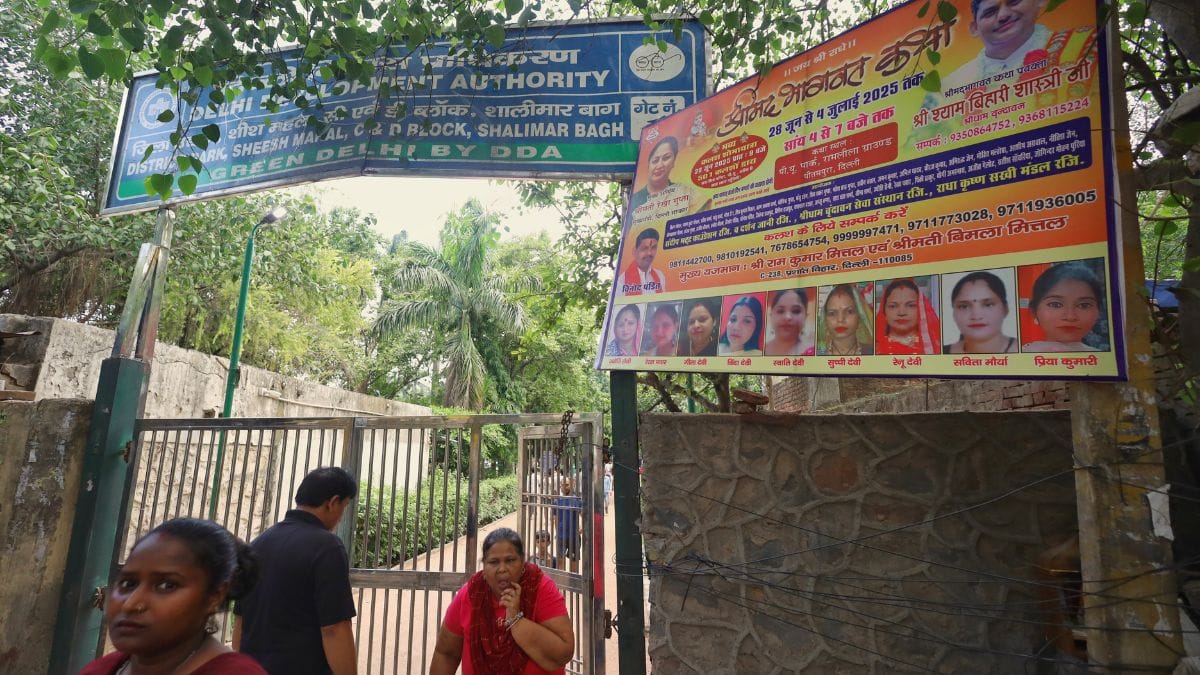
Legends, memory, and tunnel to ‘Ganga Ghar’
For many residents, visiting Sheesh Mahal has become a routine. Everybody in the area knows it is a historical monument. Over time, however, folklore has seeped into local memory.
Sunita Chauhan, who married into a family living in the nearby Shalimar colony, said she has visited the monument regularly for more than 25 years.
“We would explore the monument during evening walks. It has a long tunnel,” she said.
According to her, the tunnel connects to a ‘Ganga Ghar’, which was allegedly used by a queen to bathe in water brought from the Ganga.
“Our forefathers had narrated the stories of the king and queen who stayed here,” she added, insisting that Shalimar Bagh once had Hindu rulers.
Today, Sheesh Mahal is surrounded by government quarters, ‘Sheesh Mahal’ apartment blocks, and colonies on all sides. For decades, the ASI-protected monument remained neglected, crumbling under the weight of Delhi’s pollution. The recent restoration has returned a bit of dignity to the structure, and with it, attention to the politics at play.
“It is a known fact that the RSS, BJP, the Vishwa Hindu Parishad have a cultural agenda. However, if a particular site has been restored just as part of routine archaeological heritage, we must welcome it,” said author and commentator Saba Naqvi. “Yes we live in an age when it could be politicised — we have to hope it is not. Because we can never get away from the fact that the most visited site in India, from a tourism perspective, is the Taj Mahal. We have schizophrenic and dual impulses as a society.”
(Edited by Prashant)



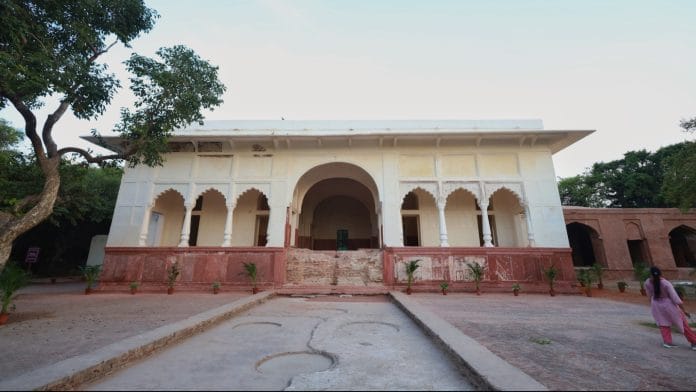



Salman Mondal Rushdie Smith – Kashmiri Plaque in BJP rule.
(MeToo hippocratics)